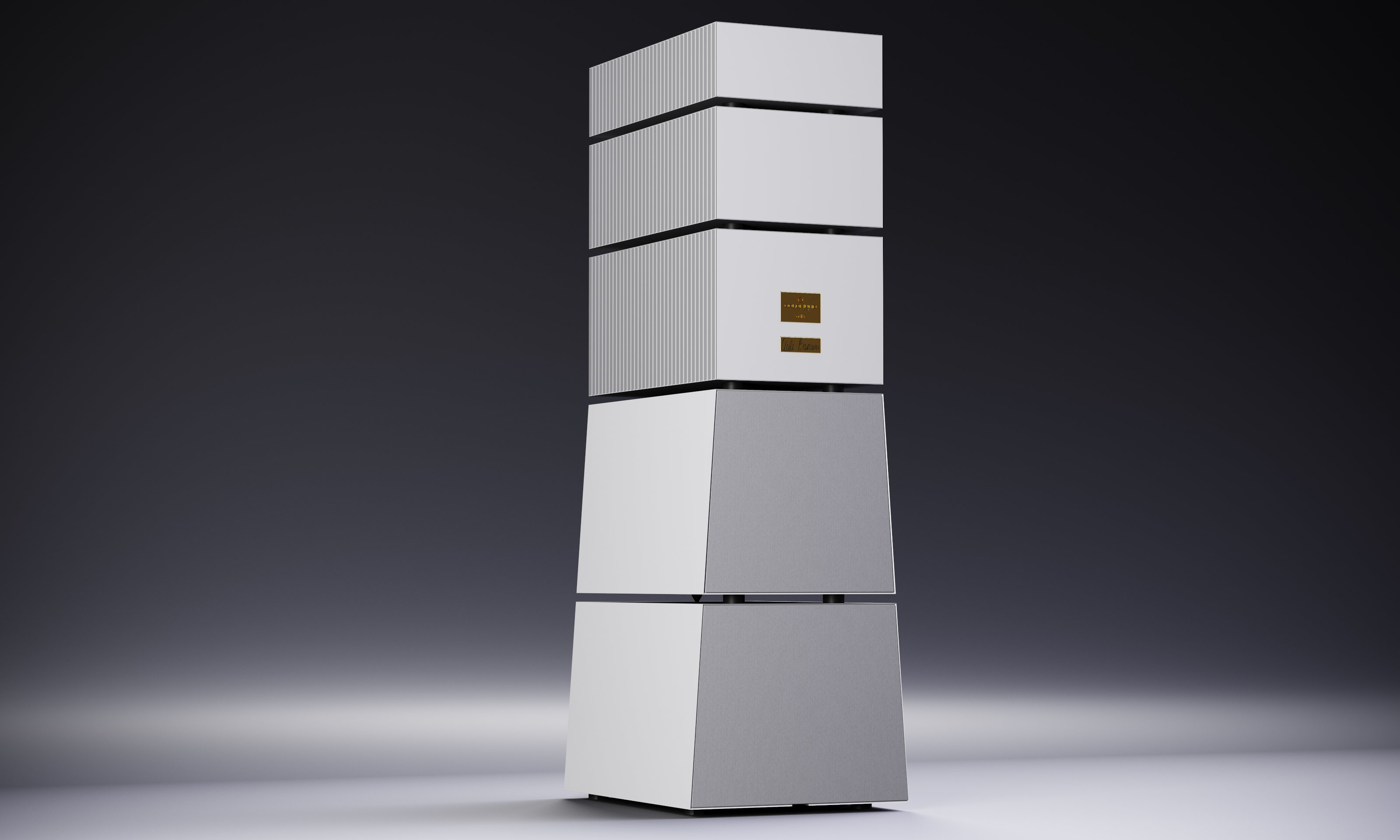
French designer Cécile Barani was responsible for giving shape to Swiss audio manufacturer Goldmund’s ultra-high-end speaker systems. We spoke to Barani about her work and the influences and considerations that she has brought to bear on these highly refined components. During her studies in Monaco, then at the School of Design in Copenhagen, and finally at the Higher School of Art and Design in Saint-Étienne, Barani studied different aspects of design: object design, space design, and industrial design.
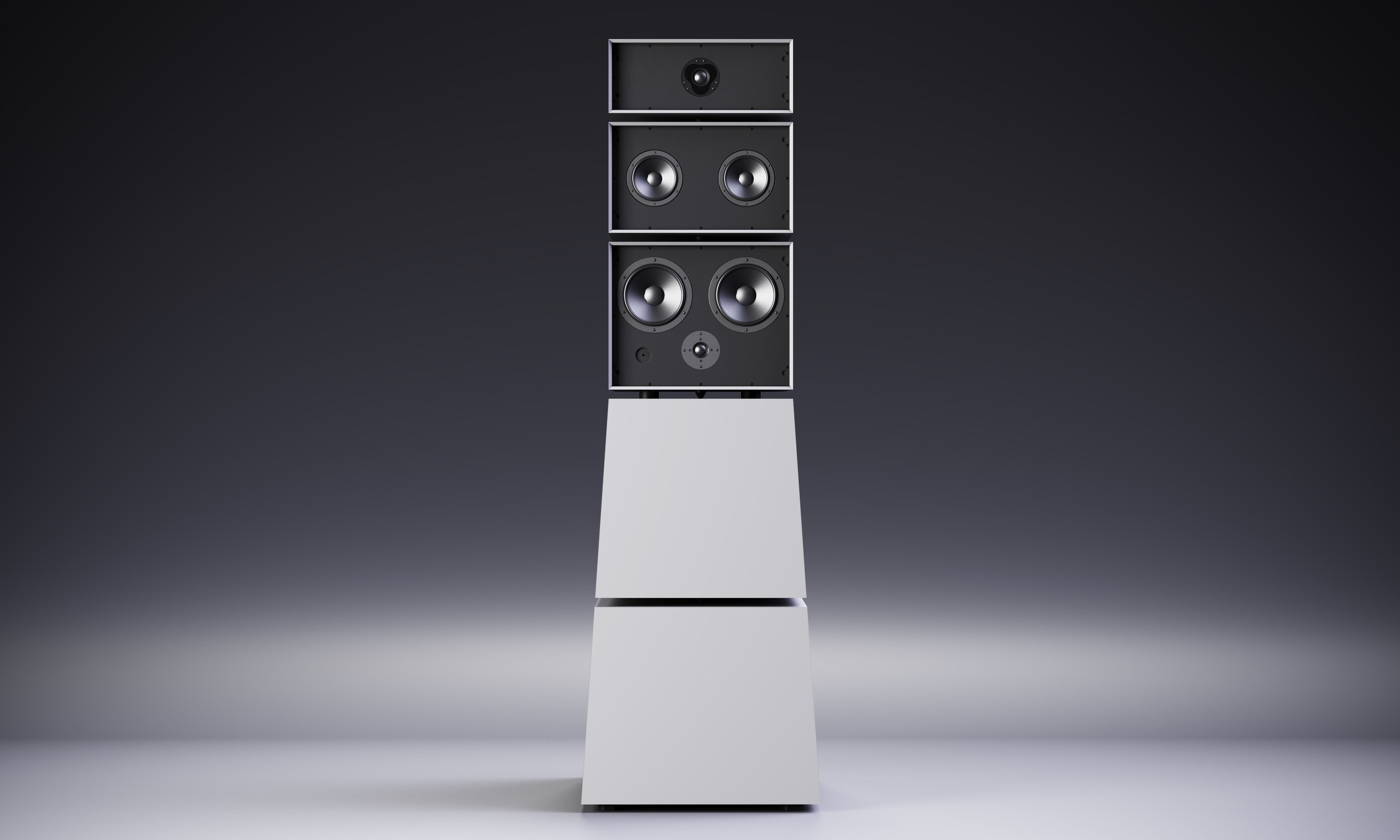
Now based in Paris, the designer has worked on urban exterior and bespoke interior furniture, always in multidisciplinary teams. ‘What interests me is working by taking the context into account, such as the place, the function, the technical constraints,’ she says.
Goldmund, a Swiss company established in 1978 to further the art of audiophile-focused manufacturing, approached the young designer to reshape its monumental series of active speaker systems. The first result of the partnership was the Gaia, a sculptural speaker formed from a stack of five aluminium boxes, housing a total of eight drivers and eight channels of amplification. The Gaia rises to a height of 2.1m, making it a true tower system, suitable for elaborate home installations with a very dedicated focus on listening.
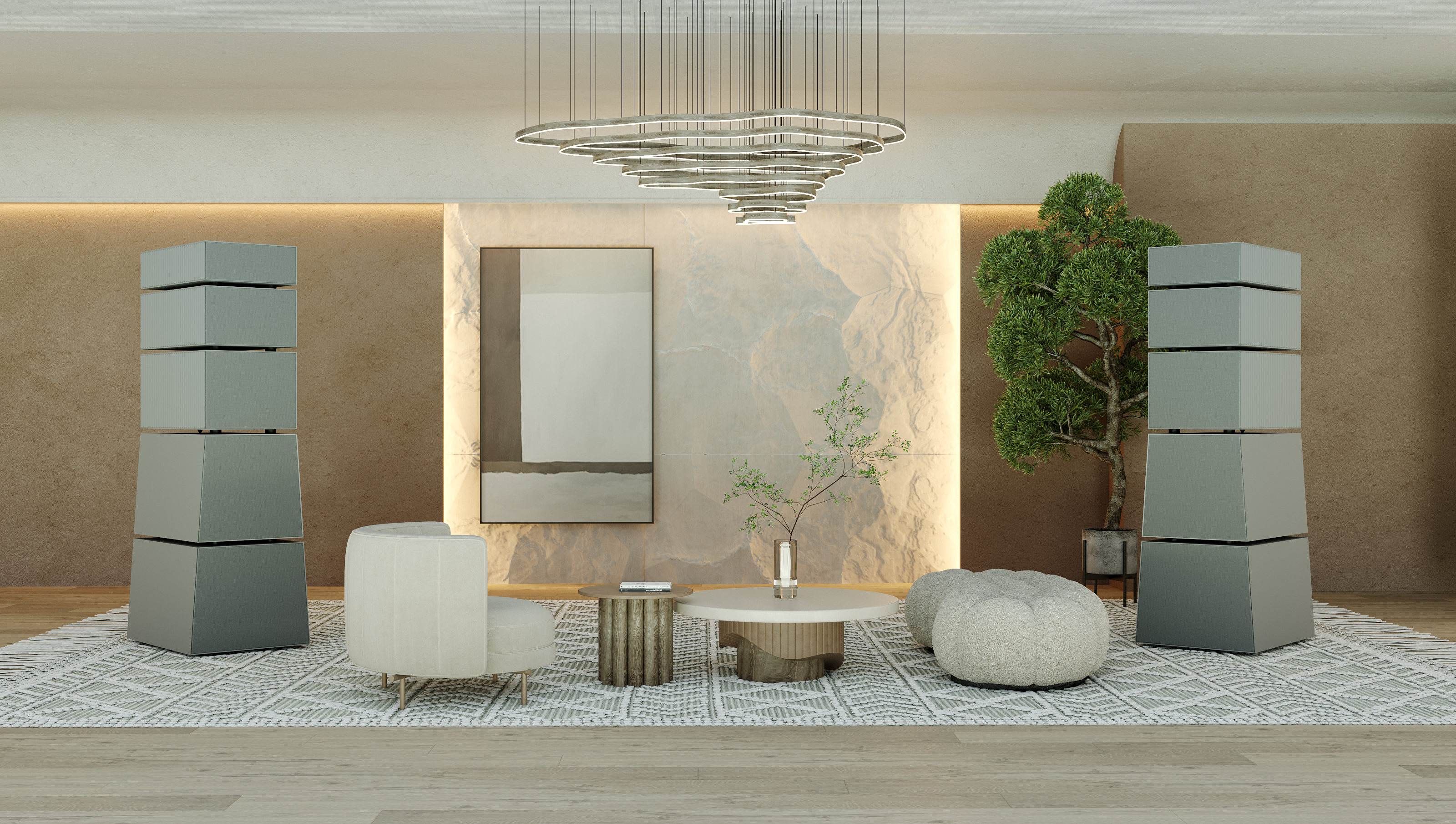
‘The first time I met the Goldmund team, they gave me a clear and detailed brief. I sat down and listened to their then flagship product, the Apologue. Before that, I’d drafted a few ideas but once I’d listened to the speakers, I realised the direction wasn’t right,’ Barani says. The Apologue was designed by Italian artist Claudio Rotta Loria in 1987 and one of the original pairs was selected by MoMA, so the bar was set high.
For Barani, the technology determined the visual direction. ‘The sound [of the speakers] was so precise and detailed, I knew that I’d have to create a visual approach that didn’t conflict with the sound.’ The result is the Gaia speaker, which retains the signature stacked enclosures of the Apologue but distinguishes itself through its size, material assembly, and refined architectural design. Unlike the high-tech constructivist aesthetic of the Apologue, Gaia presents itself as a sophisticated, elegant column.

‘With Gaia, the objective was to create a totem-like object with no specific orientation,’ the designer explains. ‘What actually fed the project was my discussions with Goldmund’s engineers. We talked about the constraints that speaker placement made on the design and the form embodies these visually.’
Regarding the material used, Barani explains that ‘aluminum is the company's signature, so I wanted to keep it to echo their history. The challenge of this project was the assembly of the materials together to achieve clean joints and a monolithic appearance.’
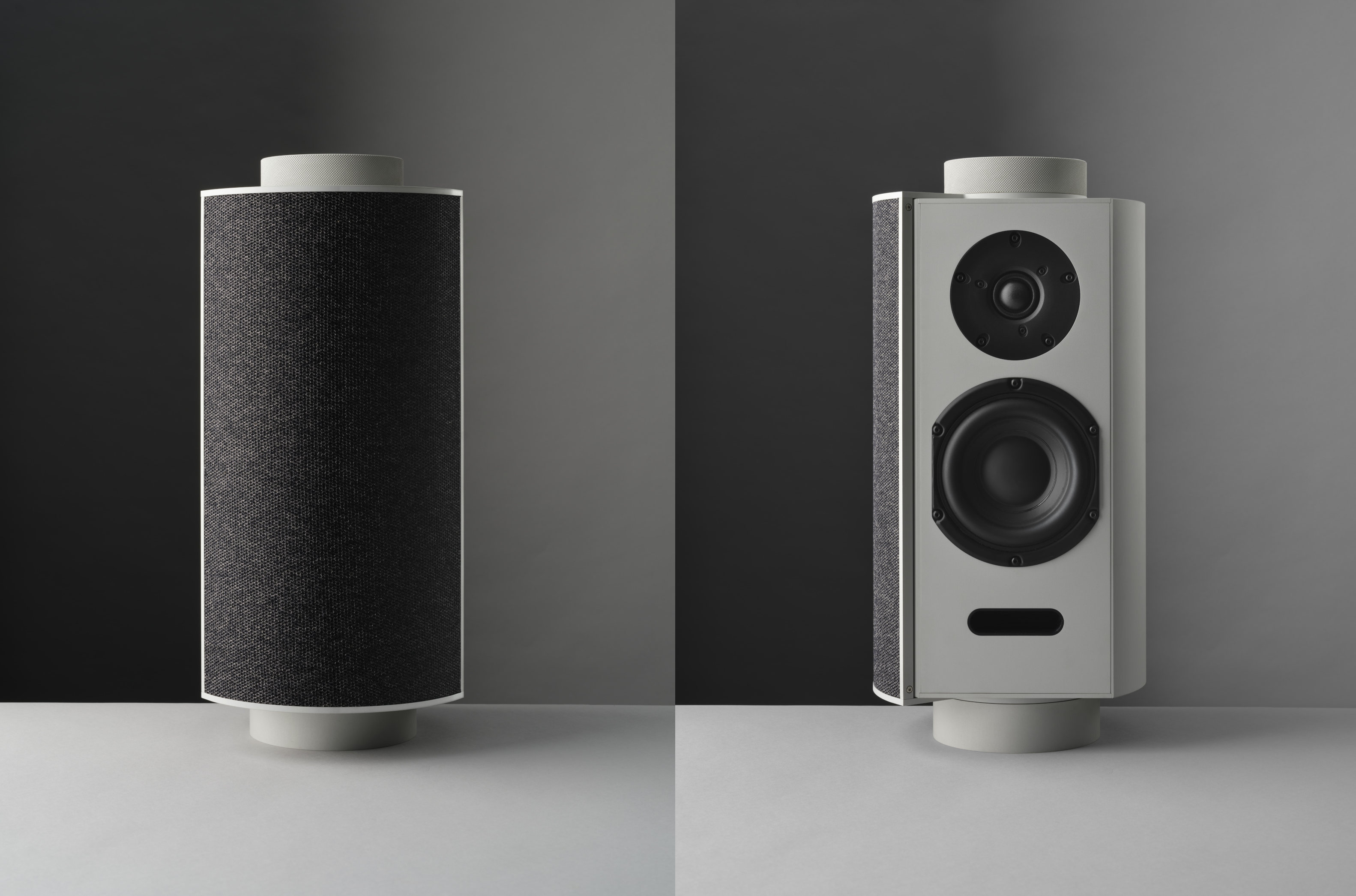
Barani has also designed Goldmund’s Pulp series, a speaker that uses WiSA technology (an established wireless digital audio format). Unlike the vast and ultimately static Gaia speakers, Goldmund expects customers to want to move their Pulp speakers around, and hence they’re the company’s smallest speakers. ‘The biggest constraint was therefore the size,’ Barani says. ‘The goal was to integrate all the components into a compact enclosure with a minimal and clean design, without compromising sound quality.’
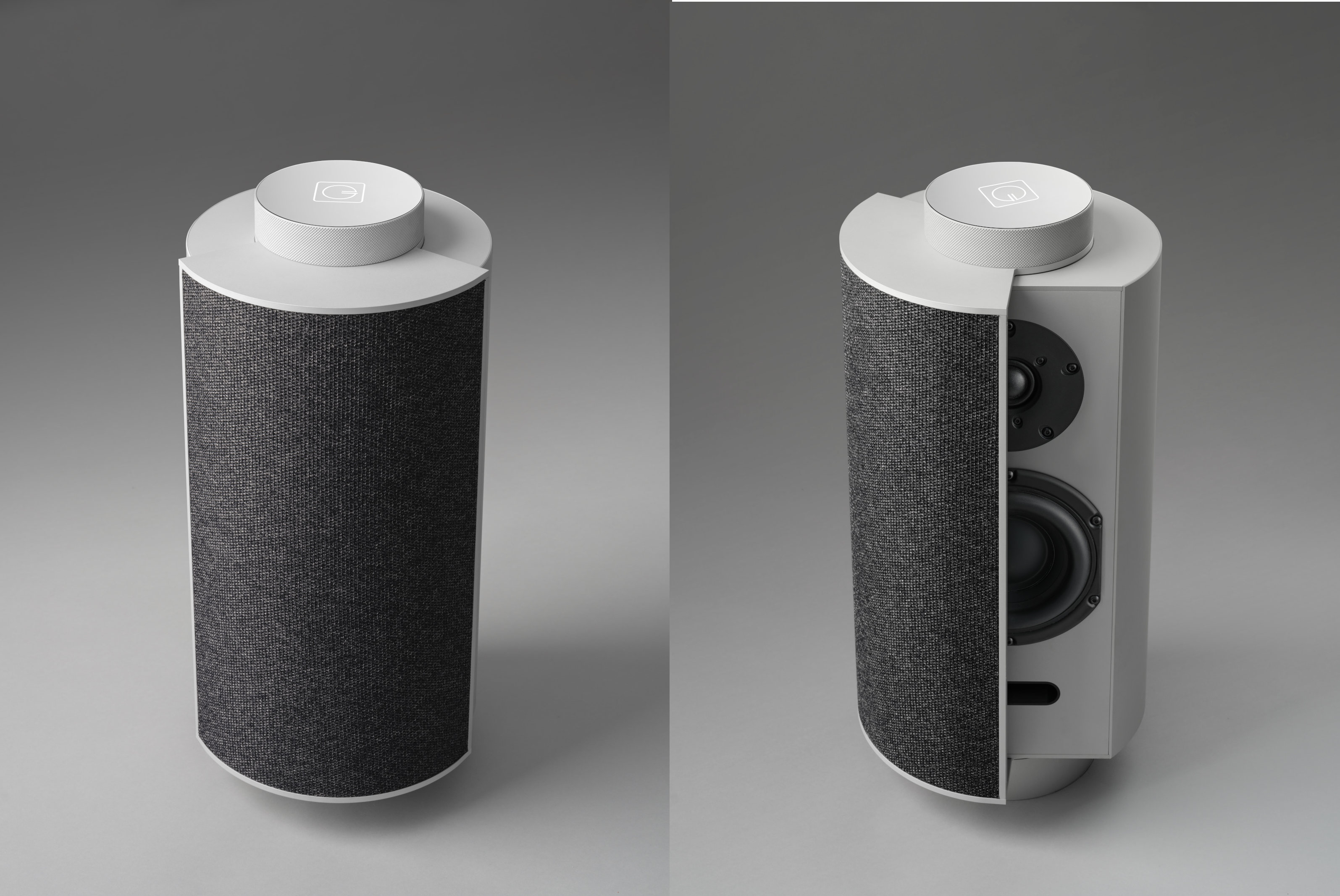
The cylindrical Pulp speakers are also formed from aluminium. Barani drew inspiration from the circular components on the Apologue, which acted as supports and junctions in the speaker’s frame. ‘Goldmund also wanted customers to have the option of using the speaker grille, which is another circular element that rotates out of the way of the drivers,’ she explains. Available in either black or grey, the pivoting textile-covered grille allows Pulp to read as a freestanding sculptural object, either on its self-contained plinth or on the separate stand.
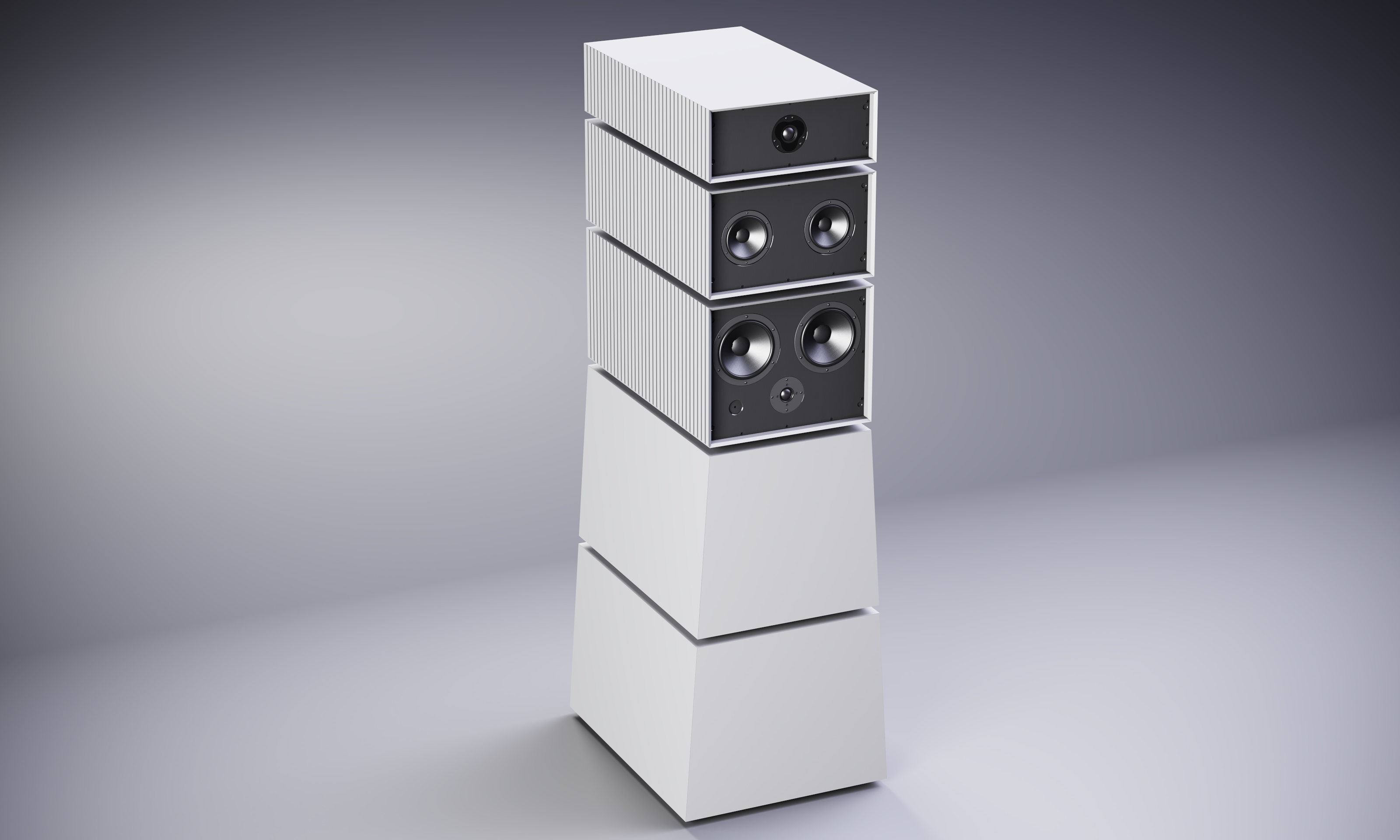
Goldmund isn’t in the habit of releasing a deluge of new products every year, preferring to refine and upgrade speakers that are designed for a lifetime of use. Between 2023 and 2024, this was a little different, as the entire collection was completely updated, but generally speaking it has an ethos of subtly upgrading products to integrate new technology, not wholesale reinvention.
‘[In that respect], we have a shared philosophy, particularly in the longevity of products,’ notes Barani. ‘Goldmund is about quality, not quantity.’ Thanks to the designer’s capable hands, these important considerations are clearly expressed.
Goldmund Gaia and Goldmund Pulp, information at Goldmund.com, @Goldmund_official
Cécile Barani, CécileBarani.com, @Cecile_Barani







